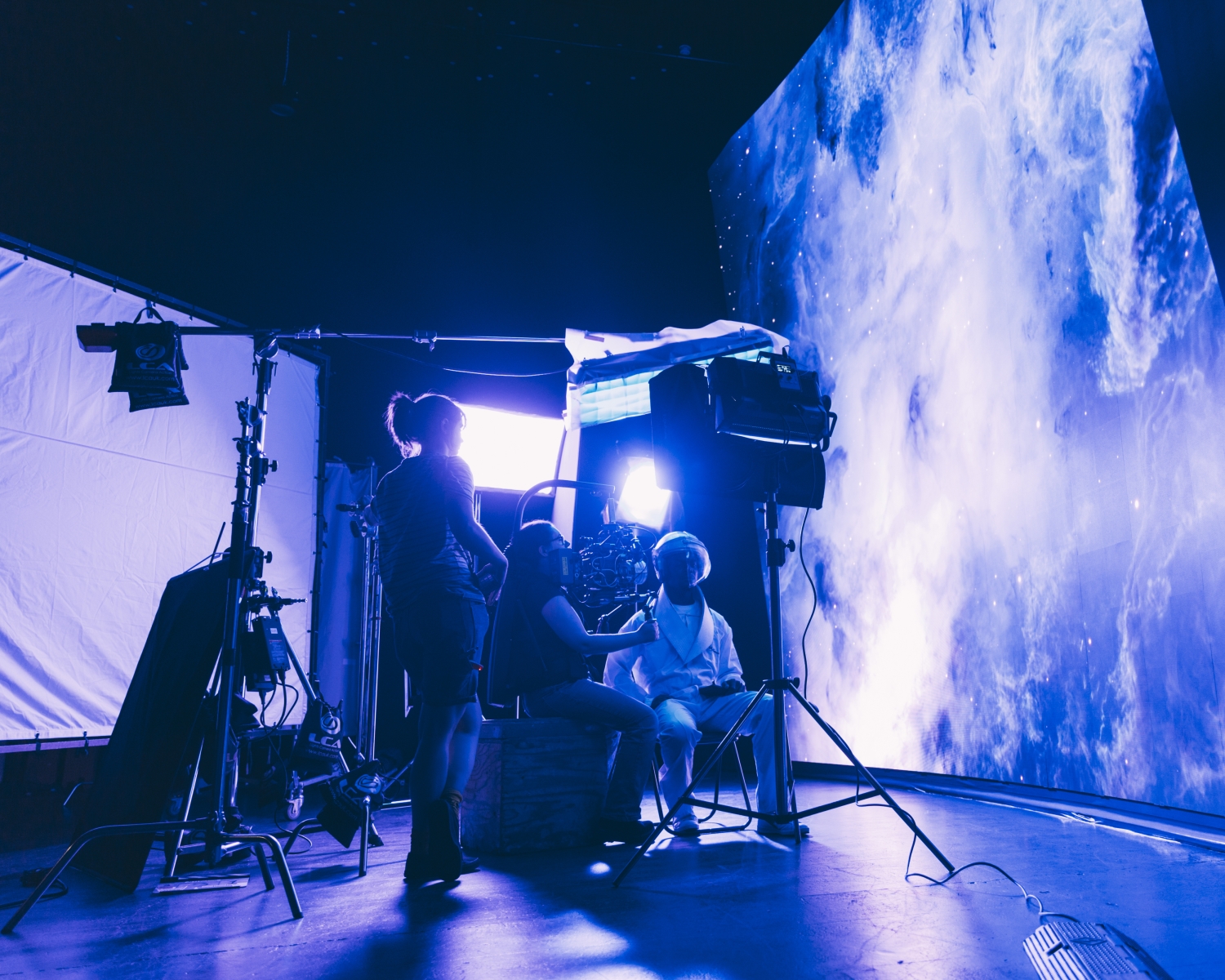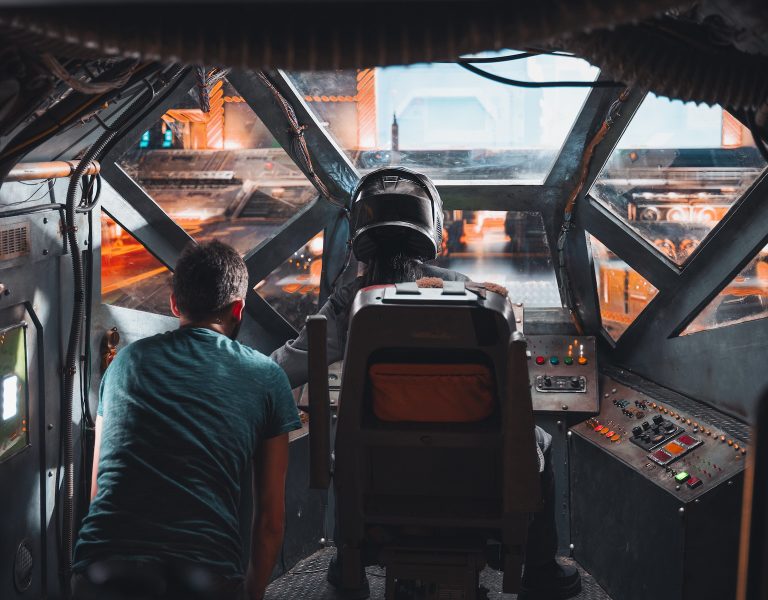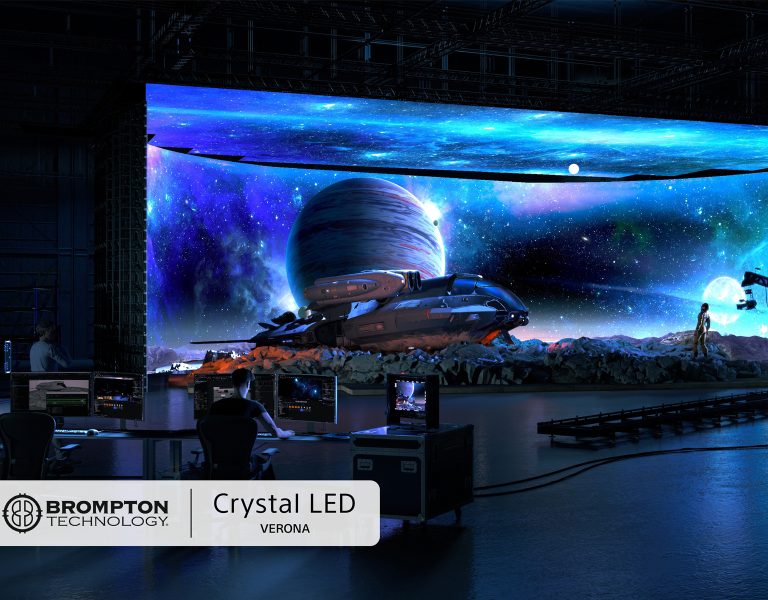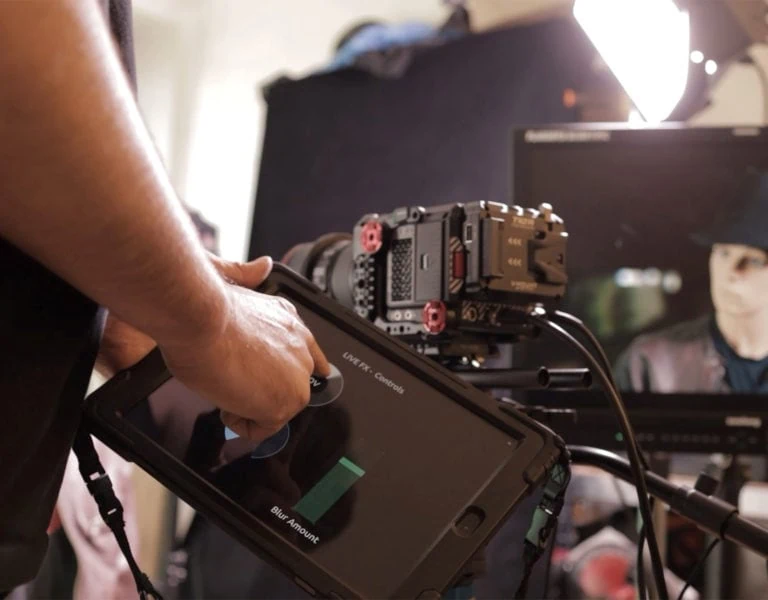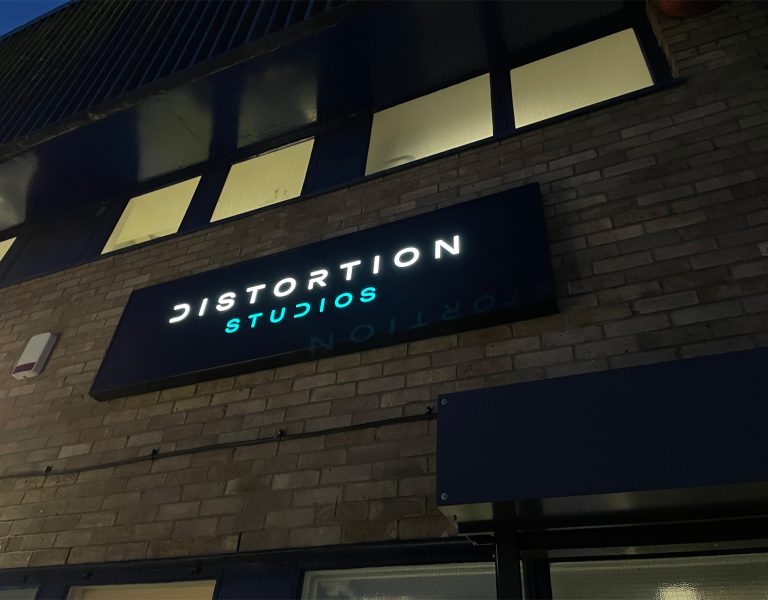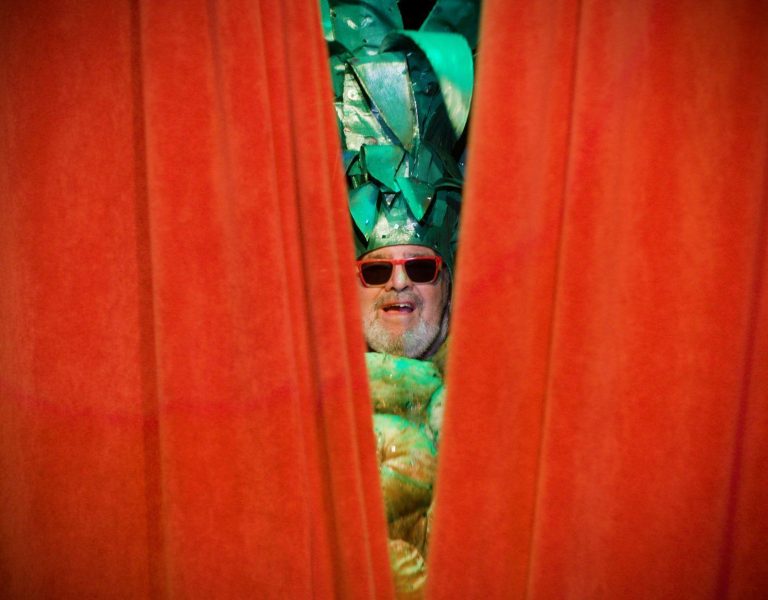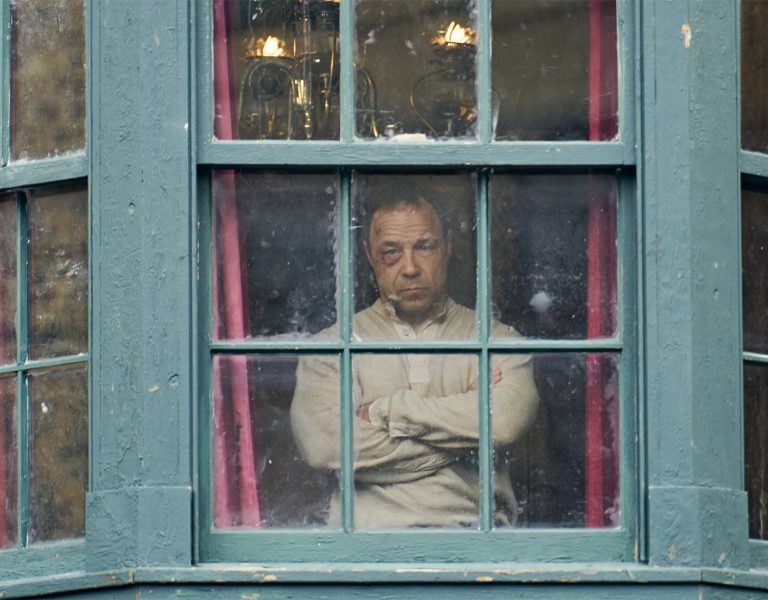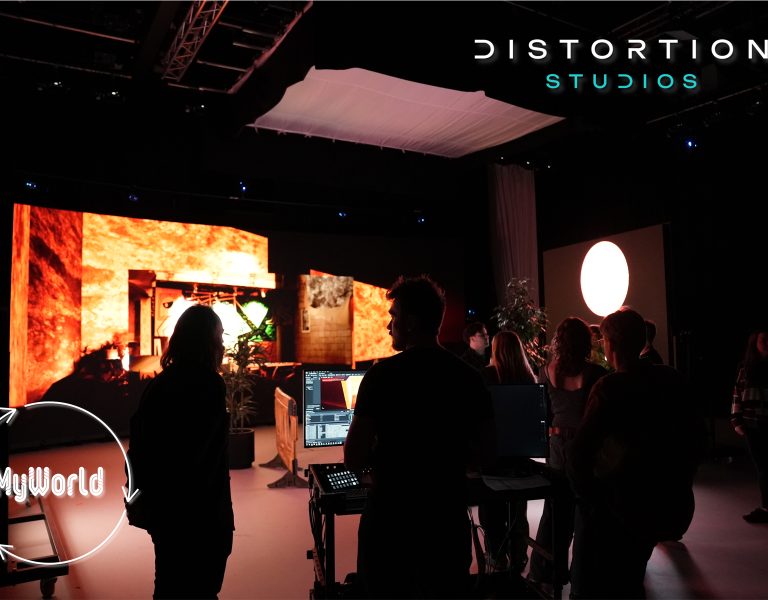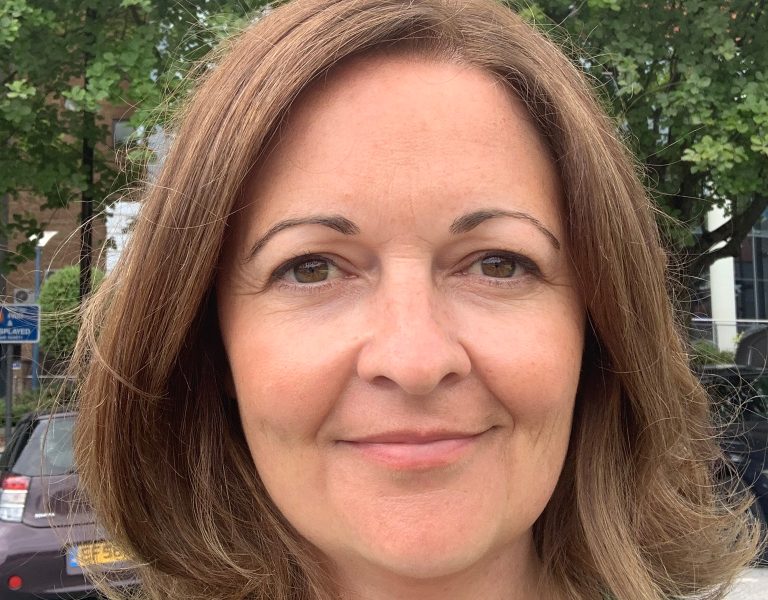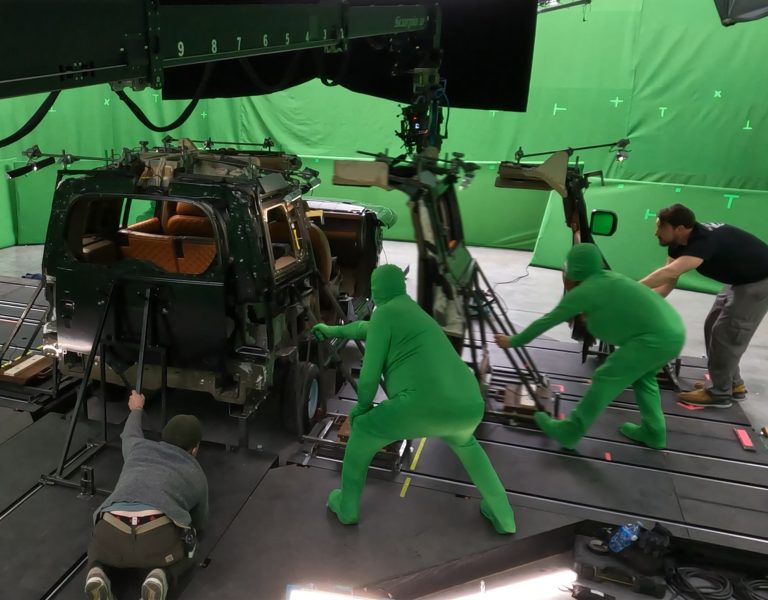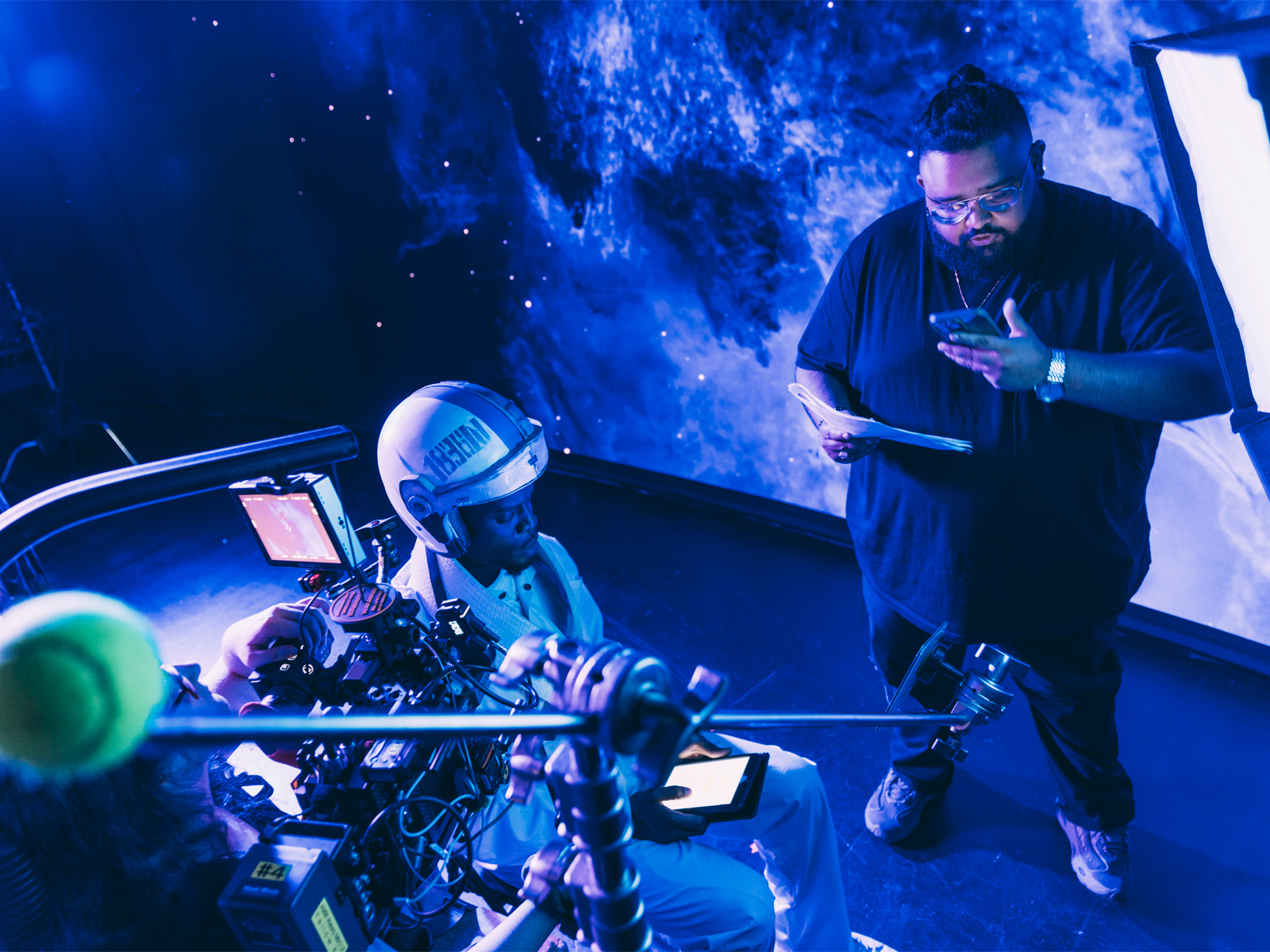
Arvind Jay is a South Asian director on a mission. His latest film, Afterglow, utilised Brompton LED technology in CUBE Studio’s Berkshire-based Virtual Production (VP) studio, allowing his short film to go into space and explore generational legacies that transcend earthly boundaries.
Jay was born in Singapore, and his parents and extended family worked hard to give him the opportunity to study film making in the UK. He chose to honour that support with the story’s ethos, making a short film that studies love, loss and sci-fi themes.
“I worry about leaving a legacy, and that spans not only family, but also work,” he says. “It’s important to me that my family understand and appreciate my work, because my mum and dad come from working class backgrounds and worked their whole life to send me to the UK.”
Afterglow is the second film from Jay and has completed principal photography and is currently being edited. Diversity and inclusion are high priorities for the production, with 100% of the cast and 70% of the production team being from under-represented communities in film and TV.
“For me, it’s very important to create something that affirms all the effort across my entire family and the community that have invested in me,” Jay explains. “Afterglow’s story follows a man who lost his father when he was a child. His father had taught him the virtue of leaving behind a better life, and he’s consumed doing just that. It’s about letting people go, but also allowing yourself to do what you want to, to leave the world better off.”
Having begun his education in Singapore, Jay moved to the UK and trained as a mature student at Arts University Bournemouth (AUB). The sense of family and belonging he got when he visited Bournemouth continued, and he knew this was where he wanted to finish his education.
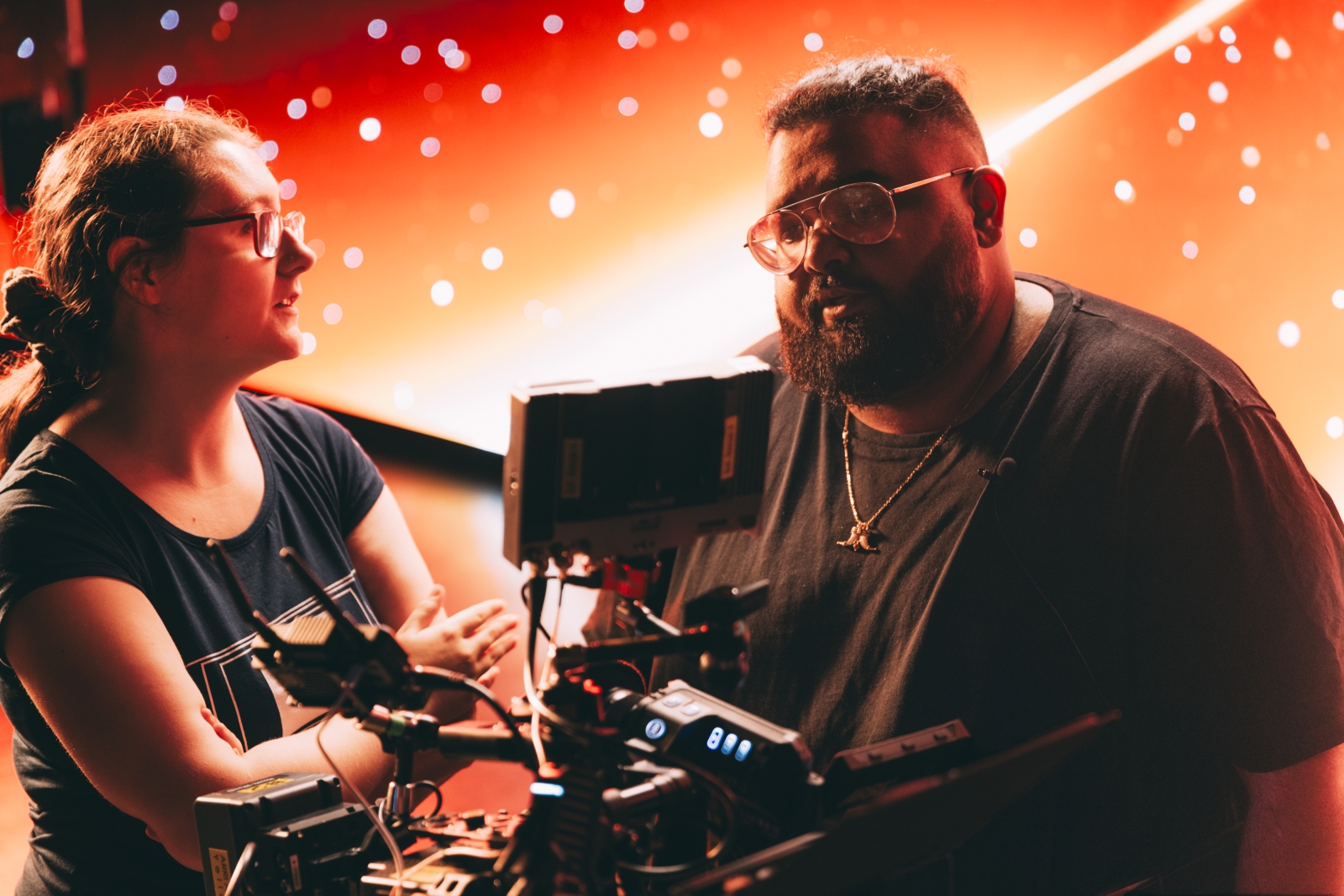
“I picked AUB because I saw it had jumped ranking places and thought, this is a Uni that is on the up, it’s trying to be better. Even though I hadn’t got in yet, they sent me a Christmas card. It was handwritten and I think that sealed the deal. AUB was welcoming, with a strong community feel. I can never speak enough about it, it’s an amazing place and the support they have given me has been unbelievable.”
Stargazer was Jay’s graduation piece, currently available to watch on DUST via its YouTube Channel. The short film already has over 118,000 views. DUST is a community of filmmakers, industry professionals, and sci-fi aficionados looking for the next big thing in sci-fi. The platform creates and curates innovative movies, new series, ground-breaking short films, and immersive podcasts that push the boundaries of science fiction.
“My graduation film was pretty good!” he says. “We raised £11,000 via crowdfunder and broke the records for a Uni film.”
Once the film was sold to DUST, the team had a small profit. Instead of sharing it between themselves, they decided to throw a launch party and enjoy their success in style. The positive feedback Jay received that night was enough to make him consider trying for the 2024 round of funding from AUB’s Funding Futures programme. The fund provides £5000 and access to filming equipment that would otherwise be prohibitively expensive to purchase or hire. Jay was successful and Afterglow began to come together. In recognition of the funding he received, he committed to using AUB alumni and students as part of the production team, wherever possible.
“Our production team was diverse, and we didn’t have to push for that. AUB is very representative, but I think people gravitate toward stories they feel represent them and that they want to advocate for,” he continues. “I’ll never forget one review that really opened my eyes to the importance of representative casting. An African American man reviewed Stargazer online, and he just said, ‘that’s the first time I have seen someone in space who looks like me’. It really hit home. These things matter and seeing yourself and stories that you can relate to is really important.”
Stargazer was also the reason Jay was introduced to CUBE Studio. At an awards night, Jay met Andrew McGee – writer/director of The Edenbound, who had recently shot at CUBE Studio.
“We were at Dreamers of Dreams, an award night hosted at Kino in Bermondsey. We were expecting to win best sci-fi film, but when the envelope was opened, it was Venus, a film directed by Andrew McGee. So now I had an arch nemesis! I went over to speak to him. Obviously he was brilliant, and the film was even better.”
The pair became close friends, and Jay followed his recommendation to contact CUBE Studio. The one-hour meeting at CUBE Studio that followed turned into an epic adventure, with Jay immediately hitting it off with Roy Kimani, co-Founder and Creative Director/Director of Innovation at the studio.
For a first experience of VP, the team could not have asked for better. The studio’s 10.5m by 5.5m Unilumin UpadIV LED volume, is powered by a Brompton 4K Tessera SX40 LED processor and supported by three Tessera 10G data distribution units. Other technologies include Mo-Sys camera tracking, AI visual generation tools and Unreal Engine, which the team also utilised to assist in creating photo-realistic virtual environments. This ensured they could create their sci-fi world, but also benefit from the onsite support of Owen Riseley, Creative Producer at CUBE Studio, who was on hand to support, problem-solve and collaborate.
“As none of the team had any previous experience of virtual production, part of our job and responsibility was helping them understand the pros and cons, and the limitations, but also what’s creatively possible,” says Riseley. “The sci-fi nature of this production opens a lot of possibilities, as well as boundaries to what can be achieved. VP technology is at the heart of that.”
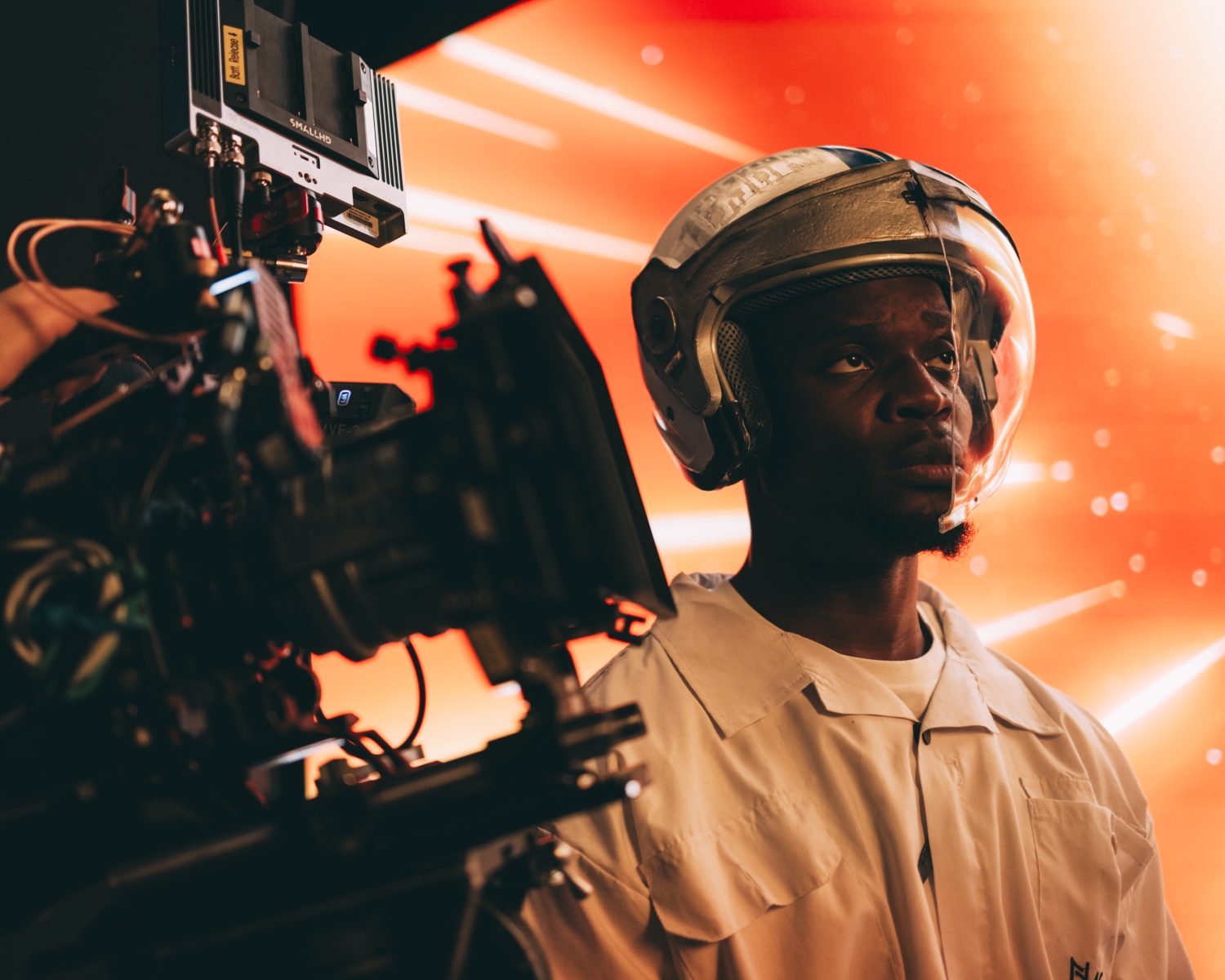
Riseley adds that they ran some helpful tests prior to filming, so Arvind and the rest of the team could build confidence and understand how they could best utilise VP for various scenes within the film.
“One thing that was very important was to create the feeling of being weightless. We had to think about the relationship between the camera and the screen, and how to create that and the feeling of motion, which required a lot of pre-discussion,” Riseley explains.
“Having the support of Owen and the team was a total lifesaver,” Jay recalls. “Our team is a real combination of strengths and faculties, so having Owen there creatively collaborating was very exciting. The ability to react live, without having to stop for a render, is so powerful. What we were able to create with the support of Owen’s live editing was unbelievable.”
Equally important is the right LED processing and software. This was invaluable to Jay’s process, and enabled him to spot a potentially devastating detail that could have jeopardised the entire film.
“The thing you must take note of is where your volume begins and ends. Our actor’s helmet had a visor that curved all the way round his face and reflected the edge of the volume. After a bit of head scratching, we realised we could feather the edges to black, then Julian ‘Eddie’ Hodge, our VFX supervisor, also from AUB, was able to supplement original footage and blend out the issue. The problem stemmed from a prop we brought into the space, but by coming together we were able to find a solution.”
Brompton LED processing played a crucial role as the bridge between the camera and the screen. “We had to be clever about how they worked together,” explains Riseley. “Although we didn’t use any actual tracking in this project, we focused on how movement – both on set and in camera – would align with the VFX. A key Brompton feature was the ability to isolate specific parts of the screen and place tracking markers on individual panels. This allowed Eddie to comp in elements more precisely during post-production. Being able to adjust the markers per shot saved a lot of time in post and gave the VFX team a level of flexibility they don’t typically have.”
Riseley notes that the Tessera SX40 played “a massive part” in the aesthetics and what they were trying to achieve in terms of being in space.
“Being in space, we had a lot of dark colours to work with, but we wanted to capture depth and dynamic range without it feeling too dark,” he recalls. “Arvind made a stylistic choice to avoid the typical darkness of space, similar to that used in Gravity, instead injecting colour to reflect different moods and themes. To achieve that, we needed to ensure a high bit depth that would bring out both the reflections and the background details. Brompton’s processing allowed us to output the required bit depth, ensuring no banding and a seamless, well-integrated image throughout.”
Using reflections to their advantage comes at another point in the film, when the CUBE Studio team suggested adding a puddle to a scene. By shooting up from the reflection, the sense of a screen is removed, ensuring the audience is completely unaware of its existence and disbelief remains suspended.
Mixing live action with VP can be difficult, but ensuring the colour palette was consistent enabled Jay and his team to blend both forms of filming to create a cohesive result. By maintaining constant communication with the team at CUBE Studio, Jay ensured they had all the information they needed to develop a consistent vision for the piece.
“For me, the team is key to colour matching and style matching between both the studio and the physical locations. We had to cut between the studio and an on location British household with Nigerian influences. If you don’t have a strong colour palette it’s not going to work, it will feel like two different films. We used mood boards and strong communication between departments to make that happen.”
Riseley explains that the key challenge of integrating new technology, both technically and creatively, was helping people see the technology not just as a tool, but as a catalyst for creativity.
“It opens doors and opportunities that weren’t possible before,” he says. “With Brompton, it’s so seamless that it almost becomes invisible, yet it’s a critical part of the process. The challenge is that it blends in so well, you start to take for granted what you’re able to achieve so easily. On this particular shoot, we were able to manage the pipeline and ensure we had the bit depth and dynamic range needed to replicate a space environment. Brompton also helped us synchronise everything, from the VFX pipeline to the tracking markers, so everything worked in unison.”
Using the screens in the VP studio also makes the process less challenging for the actor. It allows Jay to place his performers in the space, whilst a green screen approach requires a lengthy process of checks and imagination of what the screen will look like once it is rendered. With live editing available thanks to the LED film screen, the actors can see what is happening and be immersed in the space.
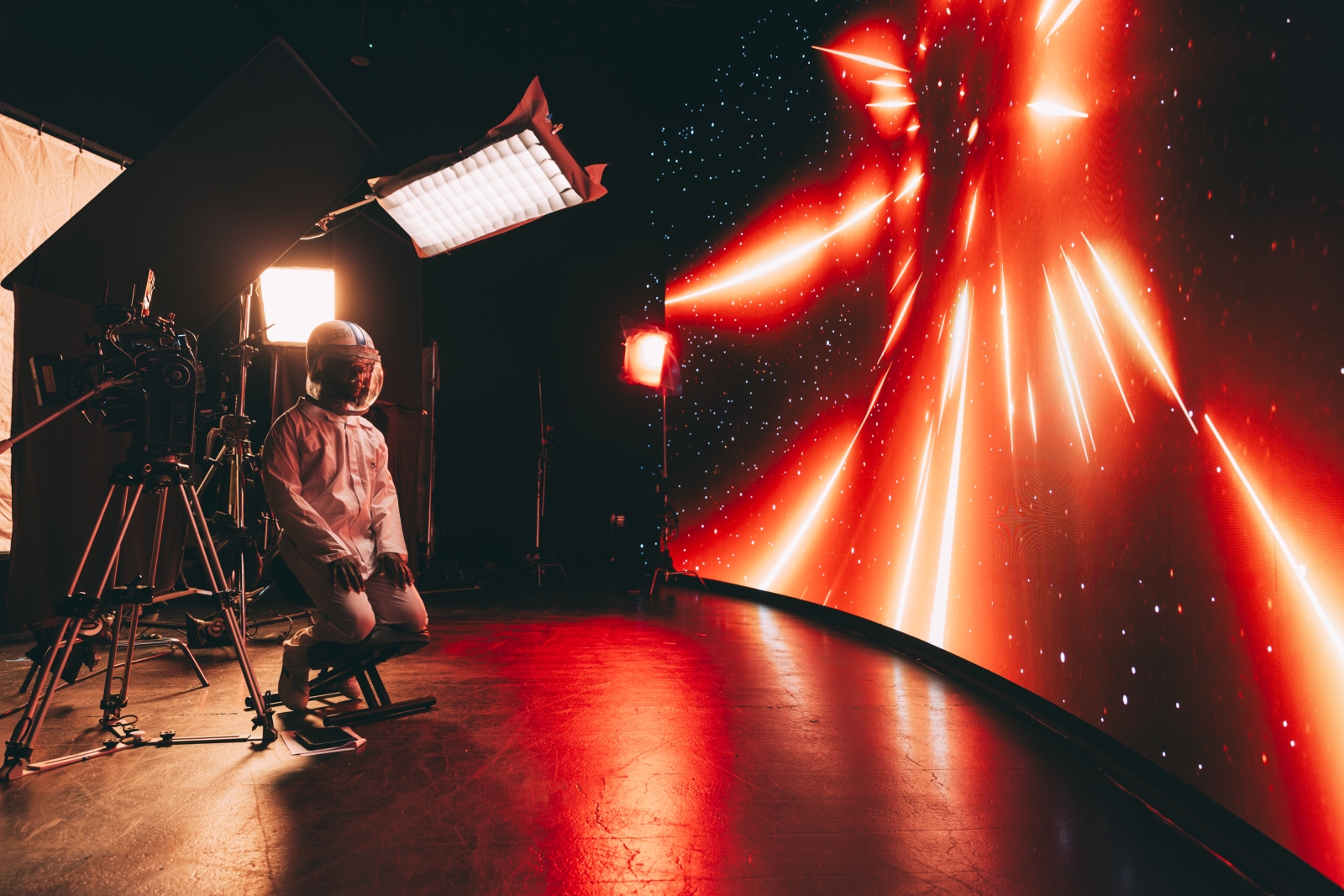
The process of bringing to life a fantastic story is helped by technology. Strong hardware and responsive software provide an excellent place for creativity to happen. Riseley emphasises that using Brompton LED processors allowed them to consistently deliver the best possible image output, with everything working cohesively.
“That’s what Brompton does so well,” he exclaims. “And what’s even better are Tessera software additions like Extended Bit Depth and PureTone, as well as the extra functionality for camera inputs, shutter speeds, and trackers.”
These enhancements have proven invaluable in simplifying the production process.
“All these little things save time and reduce hassle,” Riseley continues. “For example, being able to say, ‘Can we add trackers on this one shot?’ and knowing we can put them in specific places without causing unnecessary reflections or complications for post-production is an incredible use of resources. And we can just select specific tiles for tracking.
Ultimately, as Riseley points out, this flexibility allowed the team to meet the director’s creative demands with ease. “I think Arvind was really pleased that we could say ‘yes’ to a lot of his requests. By using cutting-edge VP technology like Brompton’s Tessera LED processors, we had the ability to achieve what he envisioned, rather than having to say, ‘Sorry, that’s not possible’.”
Coupled with Jay’s strong community ties and the support from CUBE Studio, he hopes to continue his growth as a director, and completion of the film with another round of crowd funding.
“My biggest issue with Stargazer was that it was done in green screen, and I didn’t have a team to help deliver proper VFX. Having CUBE Studio on board made me realise that. We’ve got top industry professionals and equipment to help maintain the standard of Afterglow, and that is a really exciting feeling.”
